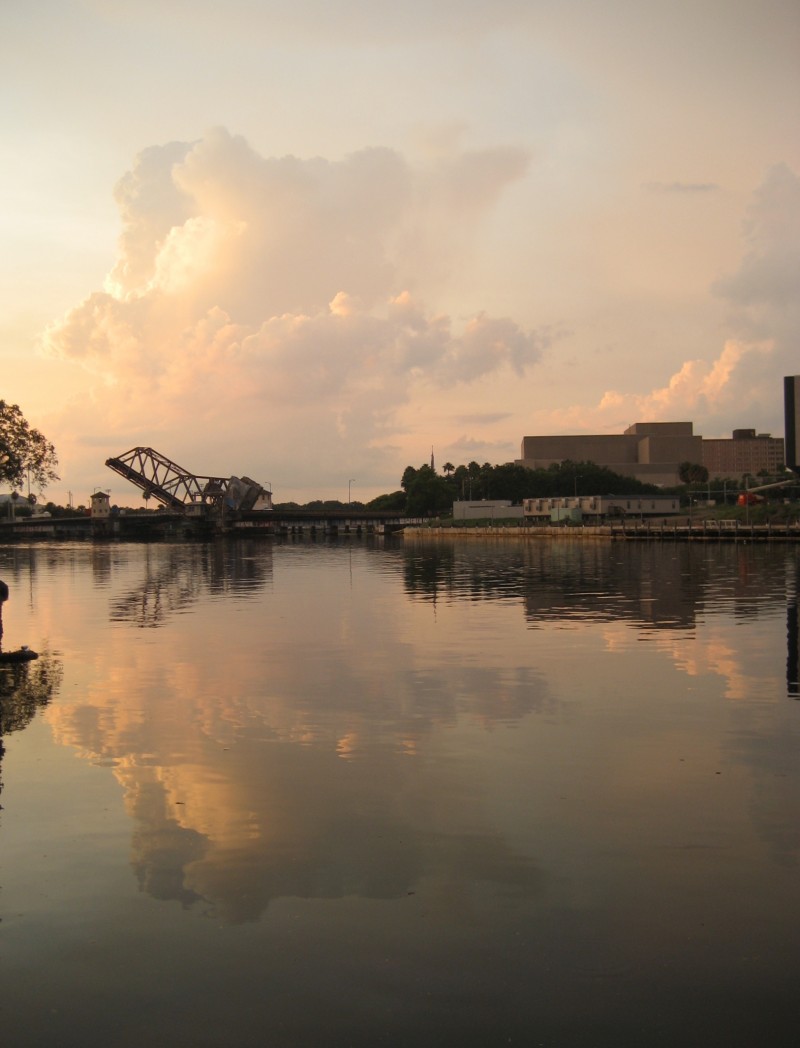
Tampa’s downtown – and much of the city – is only a few feet above current sea level; emphasis on “current.” But by the end of the century ocean levels across the globe are expected to rise by several feet because of warming oceans, melting glaciers and other effects of climate change. So last week Tampa’s administrator of public works and utilities, Brad Baird, updated City Council on infrastructure improvements that are not driven by the risk of sea-level rise, but could help protect the city from rising seas. Baird says some of those improvements involve wastewater.
Listen to the full story here:
“The known risks are in three areas. The coastal pumping stations, obviously, the ones next to the [Tampa] Bay or next to the [Hillsborough] River. Increased infiltration and inflow into that wastewater system – infiltration of groundwater and inflow of stormwater. And then third, an increase of salts in the wastewater influent; namely chlorides.”
In addition to wastewater improvements, Baird says Tampa is upgrading stormwater infrastructure.
“Transportation and Stormwater Services Department has been implementing methodologies to stem tidal influence into city right-of-way and to private property for over 15 years. In two major areas. First we have installed flap gates, sleeve valves and duck bills at different locations to minimize that saltwater intrusion onto the roadway, mainly. But also it can be onto private property. And what that is it’s a valve at the end of the outfall pipe that will allow stormwater to flow out but does not allow the seawater to flow in. And secondly we have constructed a couple of pumping stations – you’re familiar with a couple of those – in low-lying areas that have flooding due to high tides and/or extreme rain events. And then opportunities for construction of additional pumping stations and upgrading pumping stations are being considered.”
When it comes to drinking water, Baird says Tampa is well positioned to deal with sea-level rise and other effects of climate change.
“Unlike many entities across the United States – or utilities I should say – sea-level rise does not impact and will not impact Tampa’s primary source of drinking water: the Hillsborough River. In other words, the seawater cannot get past the dam. Saltwater intrusion can’t go past the dam that created the Hillsborough River reservoir. Further, Tampa Water Department – and I’ve said this before here in front of City Council – is the only utility that I know of that has full redundancy with regard to its water supply.”
In a drinking water emergency Tampa can purchase water from Tampa Bay Water which has a variety of sources. Moving forward, Baird says the City will team up with others to study climate change, including a federal program.
“Climate resilience, evaluation and awareness tool from EPA – we’re going to move ahead with that using in-house engineers. We’re going to partner with USF on some climate change research – more to come on that. We will finish implementing minimum flows for the Lower Hillsborough River. Continue to line wastewater pipelines at a rate of about ten miles per year. And then continue to look for opportunities in other areas.”
Some Tampa City Council members expressed concern about how vulnerable low-lying MacDill Air Force Base is.
Harry Cohen says because of the danger to many parts of the city, Tampa should continue to protect itself from sea-level rise.
“Maybe I’m wrong but I don’t think any of us believe that actions that we can take as a City Council are going to hugely impact the larger climate change issue and the issue of sea-level rise. But I do think it’s very important as elected officials and a public body representing a city that was recently named number one most vulnerable to storm surge in the United States that we put this issue out front and that we really heavily lobby the state and federal government to take much more aggressive action in dealing with it.”
Downtown and the Channel District are experiencing growth, including plans for a major development by Tampa Bay Lightning owner Jeff Vinik and the relocation of USF’s medical school. On Friday WMNF News asked Mayor Bob Buckhorn if it’s wise for all that development so close to rising seas.
“Well, I think we can build the projects to accommodate any additional sea-level rise. I mean, I’m not someone who ignores the fact that climate change is real. But I also think the opportunity to recreate that entire environment and make it a livable, workable neighborhood — understanding that there are risks involved – is absolutely the right thing to do.”
Developer Jeff Vinik seems to agree with Buckhorn. In September Vinik told WMNF News “all of our buildings are going to be built at a high enough level to withstand quite a severe storm that may hit.”
Here are some recent WMNF News stories on Sea-level rise: http://www.wmnf.org/tag/sea-level-rise/
Listen to the full discussion at Tampa City Council here:
Here’s a NOAA report on sea-level rise and Florida: http://seagrant.noaa.gov/Portals/0/Documents/what_we_do/climate/Florida%20Report%20on%20Climate%20Change%20and%20SLR.pdf















